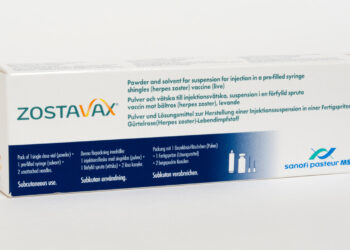Action by all stakeholders is required to protect authors and the public from predatory medical journals, an international group of prominent medical journal editors said Monday.
“Predatory journals have developed strategies to profit by taking advantage of a climate that nurtures the growth of open access, author-pays publication models,” wrote Christina Wee, MD, MPH, secretary of the International Committee of Medical Journal Editors, and colleagues in an editorial published simultaneously in JAMA and the Annals of Internal Medicine. “It is worrisome that despite the awareness of these entities for many years, academicians still fall prey to them.”
Predatory journals are those which “misrepresent themselves as scholarly journals for financial gain despite not meeting scholarly publishing standards,” the editors said in their introduction. “The number of predatory journals is difficult to accurately determine but was estimated at more than 15,000 in 2021.”
Practices employed by these predatory journals include aggressive solicitation of submissions; the promise of extremely rapid turnaround times; and a lack of transparency about article submission, processing, and even withdrawal charges, they continued. Although they may claim that they follow legitimate editorial and publishing practices such as peer review, managing conflicts of interest, and enabling corrections, they do not actually do so.
“In egregious cases, the ‘published’ articles never appear despite authors having paid the requested fees,” noted the writers, which included editors from journals based in the U.S., the U.K., Germany, New Zealand, India, and Tunisia.
“To lend a veneer of credibility, these entities solicit individuals to serve on their editorial boards or as guest editors, sometimes listing persons in these roles without their consent,” the journal authors pointed out. “Predatory entities engage in these practices to purposefully deceive authors into submitting their work and paying associated fees.”
The authors who most often fall prey to these tactics are “those who are early in their careers, lack experience and adequate mentorship, and face pressure to publish,” the journal authors wrote. However, “publication in a predatory journal may result in financial and professional consequences that interfere with the ability to publish work in legitimate journals.” In addition to hurting the authors’ reputations, the journals’ deceptive practices “endanger authors, academic institutions, legitimate journals, legitimate publishers, the scholarly publishing process, science, and the public.”
Although it would be hard to keep an updated list of predatory journals because they’re always coming and going, the editors gave a number of recommendations for stakeholders:
For authors:
- Visit the website ThinkCheckSubmit for a list of tips to identify predatory journals.
- Share concerns about a journal’s legitimacy with colleagues and institutions.
- If you receive a solicitation to submit work to a legitimate journal or serve in an editorial role, check the URL to make sure it’s legitimate, and forward the solicitation to the journal to make sure it actually came from them.
For institutions and funders:
- Make resources for detecting a journal’s legitimacy available to faculty members and grantees.
- Routinely review where faculty members and grantees publish.
- Have academic promotion committees review the quality — not just the quantity — of journals in which candidates for promotion are publishing.
For journal editors:
- Alert authors to the presence of predatory journals.
- If editors become aware of a predatory journal that is imitating theirs, they should post a message to that effect on their website or send an email to authors, reviewers, and editorial board members.
- Recognize that authors may cite articles in predatory journals, and alert authors when the editors have concerns about the legitimacy of a citation.
The authors acknowledged that it’s often difficult to take legal action against predatory journals “because the predatory publishers are often ghost entities, contact persons can be difficult to identify, and unresponsiveness to communication is common.” However, they added, “publishers should still issue cease-and-desist letters because these actions can deter continued predatory behaviors even if no response is received.”
Disclosures
Wee disclosed serving as senior deputy editor of Annals Internal Medicine, and relationships with the American College of Physicians (ACP), Beth Israel Deaconess Medical Center, Harvard University, and Boston Medical Center.
A co-author is a British Medical Association employee, and another co-author is a Springer Nature employee. Co-authors disclosed relationships with, and/or support from, ACP, Targeted Diagnostics and Therapeutics, the NIH, Alexander von Humboldt Foundation, German National Research Foundation, European Union, Germany Ministry of Education and Research, German Ministry of the Environment, Wellcome, KfW, the American Medical Association, Resolve to Save Lives, and the University of California San Francisco.
Primary Source
Annals of Internal Medicine
Source Reference: Wee C, et al “Predatory journals: What can we do to protect their prey?” Ann Intern Med 2025; DOI: 10.7326/ANNALS-24-03636.
Source link : https://www.medpagetoday.com/publichealthpolicy/generalprofessionalissues/113667
Author :
Publish date : 2025-01-06 22:32:38
Copyright for syndicated content belongs to the linked Source.


![author['full_name']](https://newshealth.biz/wp-content/uploads/2025/01/Journal-Editors-Sound-Alarm-on-Predatory-Medical-Journals.jpg)












